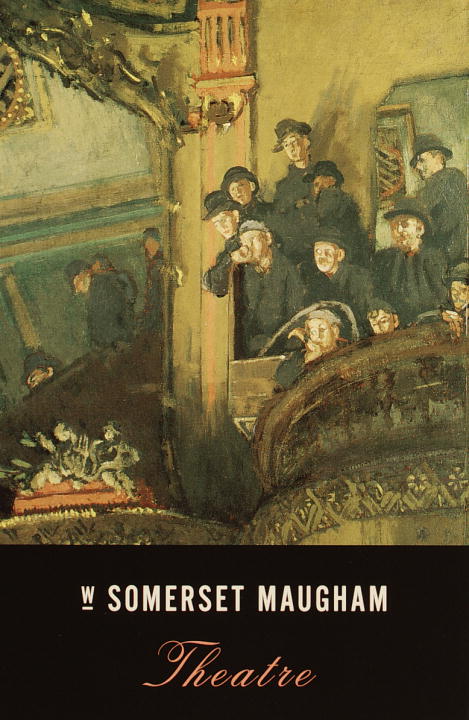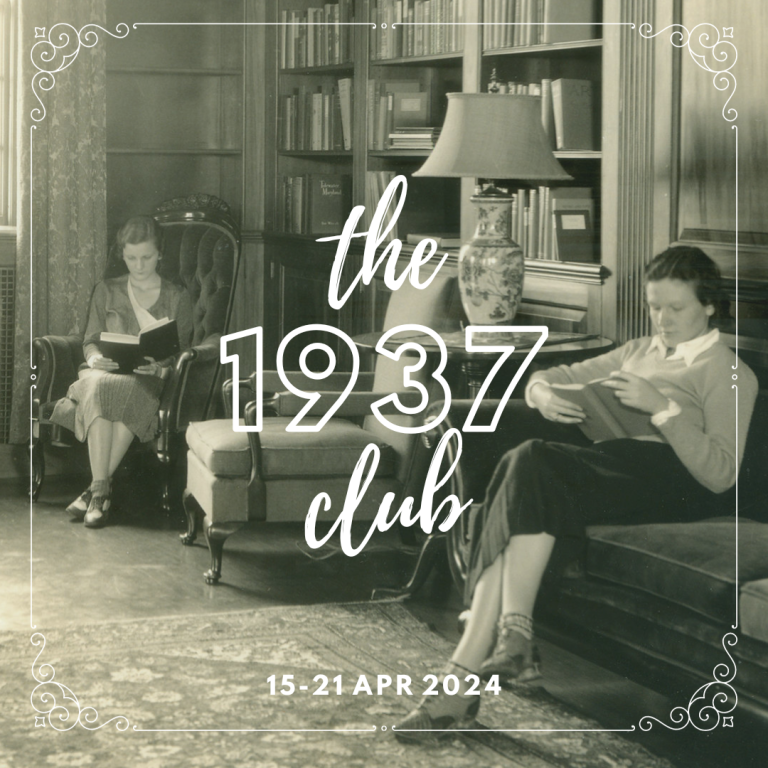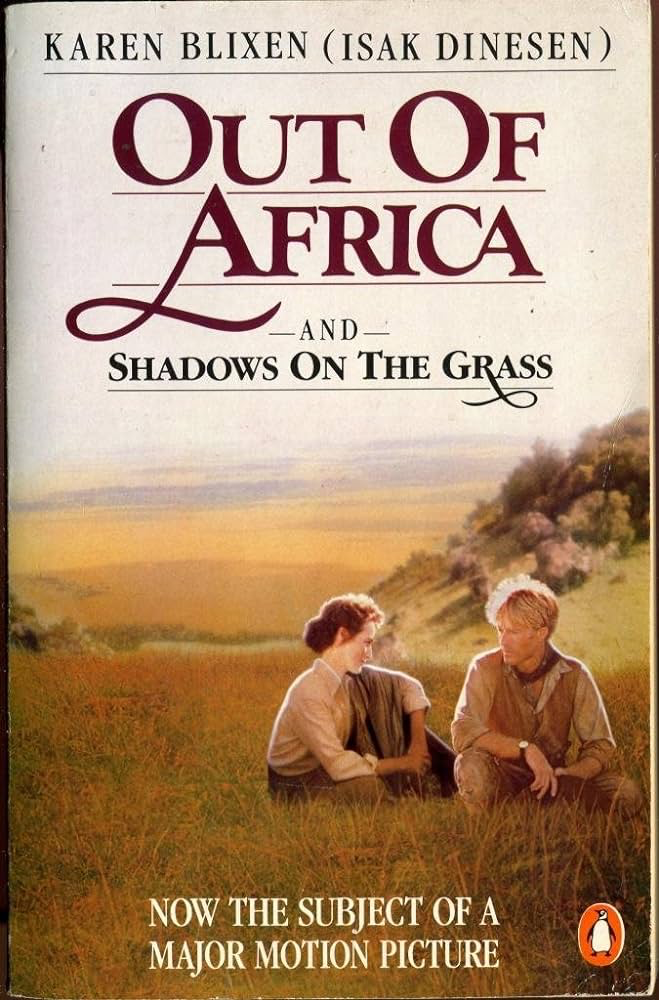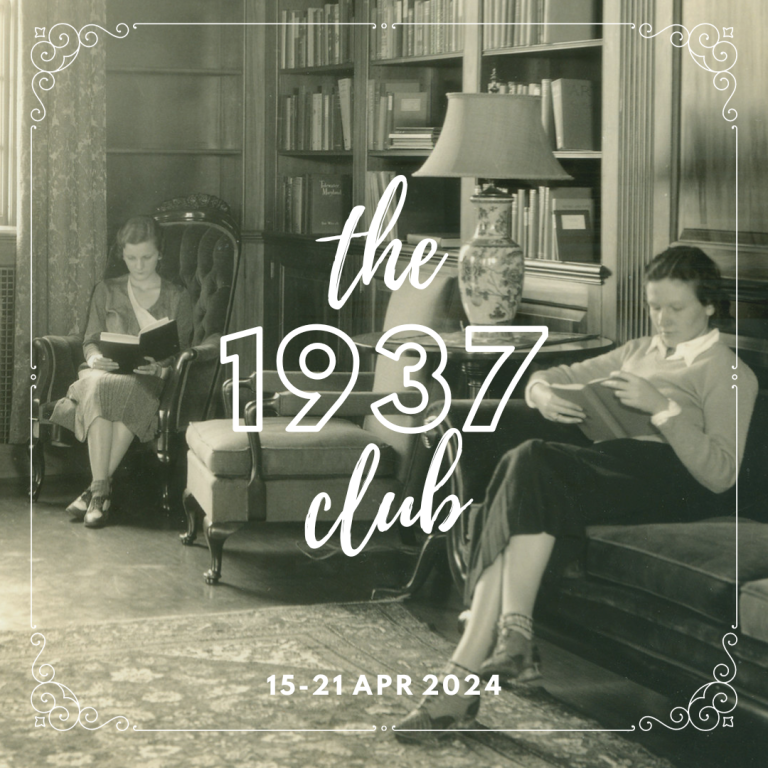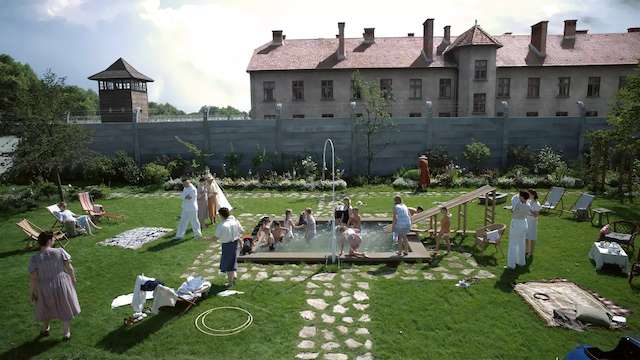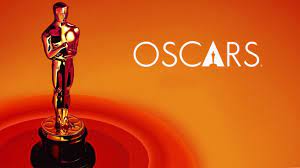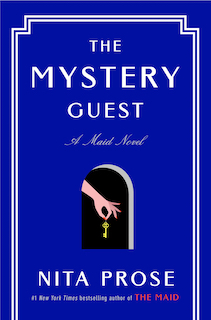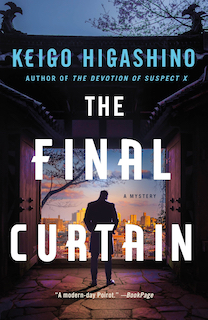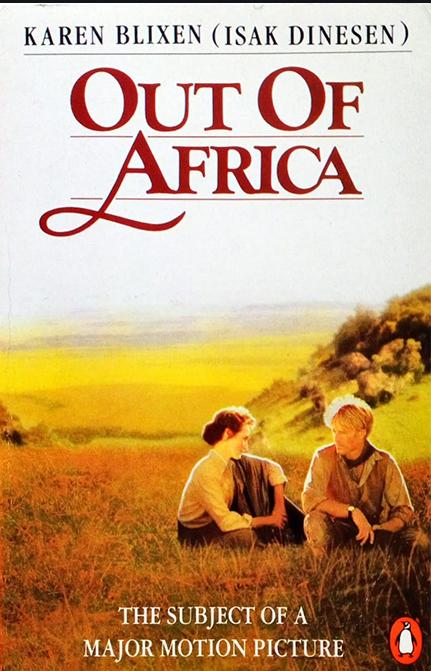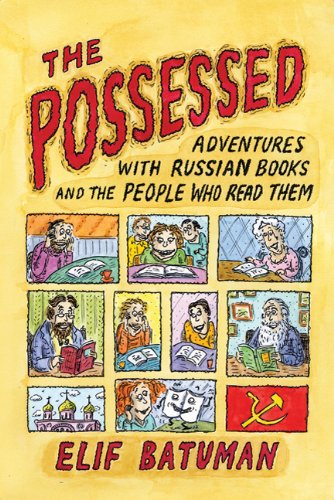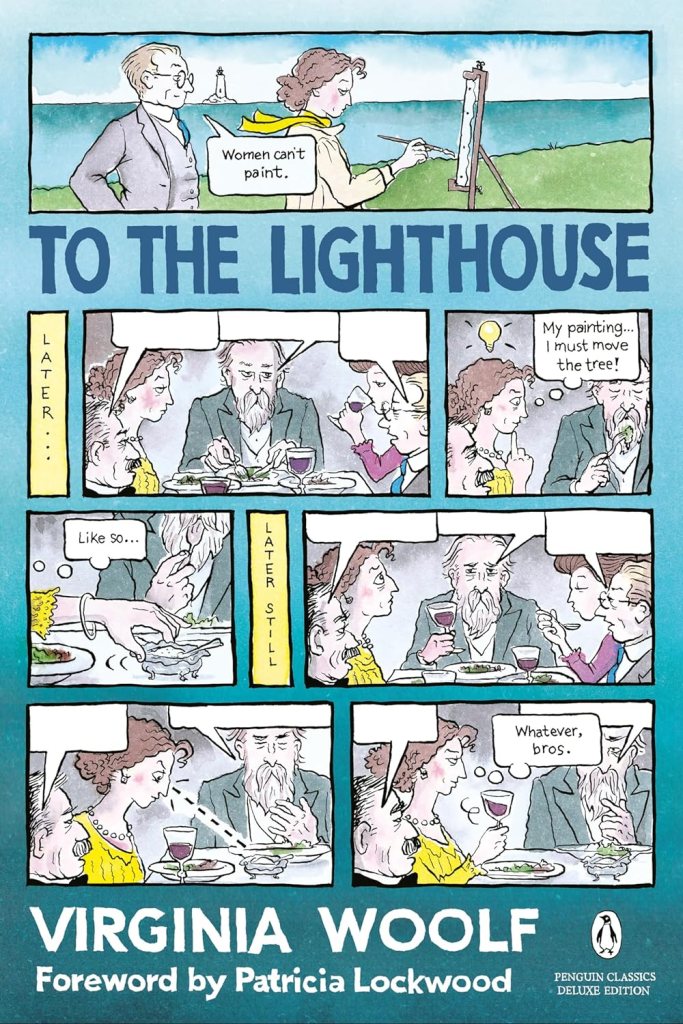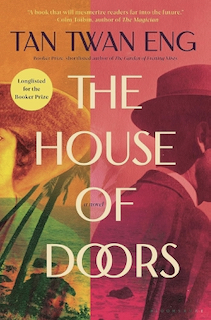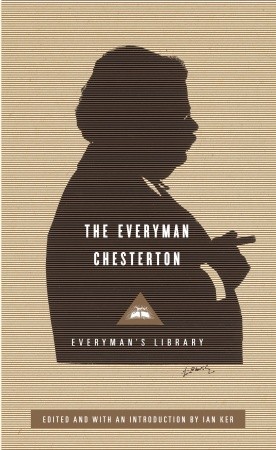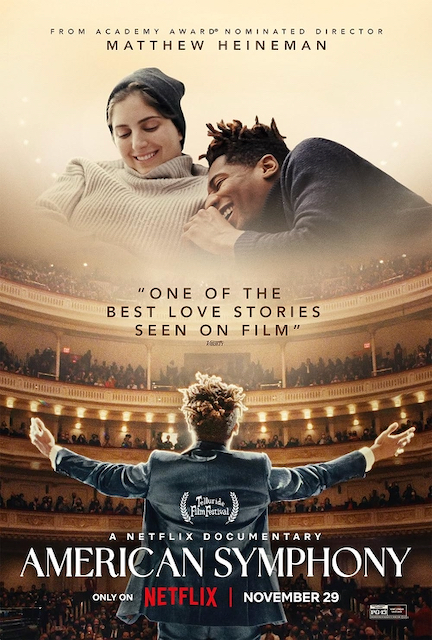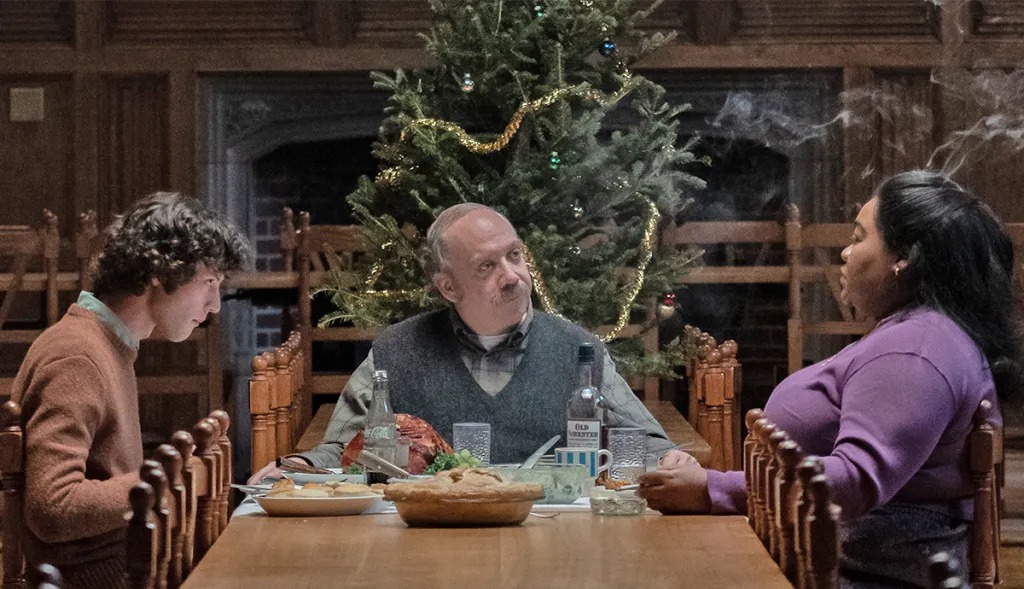The 1937 Club: Maugham’s ‘Theatre’ from Book to Screen
To wrap up my week for The 1937 Club, I’m re-posting my review of W. Somerset Maugham’s Theatre published in 1937 which some of you have read. As I’m still reading Virginia Woolf’s The Years, haven’t time to reread Maugham’s book this time. I want to re-post my review mainly because I’d like to share my thoughts back in 2010 when I wrote it, and see how much our society has changed in terms of what is real, the main issue by which in Maugham’s book, the son Roger is so disturbed regarding his theatre actress mother Julia Lambert.
As for book turned into films, those familiar with Ripple Effects know that I see the literary and the visual as different art forms, therefore being ‘faithful’ isn’t the major qualifier for a good adaptation. However, in this case, I’m quite disappointed that the essence or, the main issue, as represented by Roger’s frustration with his mother has not been transposed onto the screen, downplaying the tension and conflict that’s so crucial in the book.
_____________________
Two pages into the book I knew right away I had seen it before. Of course, that’s the movie Being Julia (2004). Annette Bening got a Best Actress Oscar nom for her portrayal of Julia Lambert, a famous actress on the London stage in the 1930’s. The movie is a colourful account of how a successful stage actress deals with her mid-life crisis. Garnering fame, fortune, and achievement in bounty, what more could she ask for but… love and passion. And during the course, obstacles, jealousy, and betrayal are all overcome, and revenge carried out; on or off stage, no matter, it’s equally exciting for the glamorous Julia Lambert.
But not until I read this novel on which the movie was based did I realize that a most important passage had been left out. And oh what an omission! For the crux of the book rests on those few pages. And not only that, the screenwriter had chosen to alter a character to suit his fancy, rounding off the edges of conflicts and alleviating tensions in presenting a smooth and suave storyline.
In the movie, Julia’s son Roger is a young man fresh out of Eton and planning to attend Cambridge after the summer. That much is true to the book. Roger is shown to be a devoted son, lovingly supportive of his mother in her pursuits in career and love life. But this is not the case in the novel. Maugham has crafted Roger as a critical young man, offering the necessary tension to the story. In a crucial scene at the end of the book, he questions Julia’s behaviour and integrity. These challenges form the climatic confrontation between mother and son, projecting the meaning behind the very title of the novel.
Here is an excerpt from this scene that captures the essence of the whole book. Julia asks Roger:
“What is it you want?”
Once again he gave her his disconcerting stare. It was hard to know if he was serious, for his eyes faintly shimmered with amusement.
“Reality.”
“What do you mean?”
“You see, I’ve lived all my life in an atmosphere of make-believe…. You never stop acting. It’s second nature to you. You act when there’s a party here. You act to the servants, you act to Father, you act to me. To me you act the part of the fond, indulgent, celebrated mother. You don’t exist, you’re only the innumerable parts you’ve played. I’ve often wondered if there was ever a you or if you were never anything more than a vehicle for all these other people that you’ve pretended to be. When I’ve seen you go into an empty room I’ve sometimes wanted to open the door suddenly, but I’ve been afraid to in case I found nobody there.”
By turning Roger into a complacent and docile young man, the screenwriter had failed to present the necessary tension in the story. Further, by avoiding the character foil between the successful actress mother and her meaning-pursuing, idealistic son, the movie fails to deliver the essential subtext, despite an impressive performance by Annette Bening.
Further, the best is yet to come in the book… such is the ingenuity of Maugham. After a superb, revengeful performance, overarching her rival, the young and beautiful Avice Crichton, and drawing everyone’s admiration back to herself, Julia celebrates on her own with a nice meal and mulls over a gratifying notion, on the very last page:
“Roger says we don’t exist. Why, it’s only we who do exist. They are the shadows and we give them substance. We are the symbols of all this confused, aimless struggling that they call life, and it’s only the symbol which is real. They say acting is only make-believe. That make-believe is the only reality.”
This is ever so relevant for us today. With all the online personae we can create and project, all behind the guard of anonymity, Roger’s quest for what’s real remains a valid search.
Sherry Turkle, the acclaimed ‘anthropologist of cyberspace’, has observed the liminal reality in our postmodern world and stated her own quest:
“I’m interested in how the virtual impinges on what we’ve always called the real, and how the real impinges on the virtual.”
Let’s just hope that the advancement of technology would not get the better of us, blurring the lines of fact and fiction, offering shields for fraud and deceits. Behind the liminal existence, let’s hope too that we still care what’s real and what’s not, and that our humanity will still be valued and not be compromised or lost in the vast abyss of bits and bytes.
The upcoming Academy Awards too, is another platform to showcase such a duality. I always find the acceptance speeches of award winners intriguing: what’s genuine and what’s fake in their thank you’s. Are they presenting their real self or merely acting? Outside of their roles, which part of them is authentic? Or, do they ever get out of their roles?
It’s interesting too to explore the influence of movies nowadays. Again, the postmodern emphasis is on the narrative, multiples of them, and storytelling the vehicle of meaning. Does the notion of Maugham’s character Julia mirror our world… that movies have become the symbols of what we call life? That make-believe has sometimes been merged with reality? Can we still tell them apart? Or, should we even try? Considering the pervasive effects of pop culture in our life today, considering a single movie can command a worldwide box office sale of $2.4 billion, and counting… Maugham was prophetic indeed.
***
Again, I thank Simon and Karen for hosting. Looking forward to the next year club in the coming months.
The 1937 Club: ‘Out of Africa’ Book to Movie
Twice a year, Simon at Stuck in a Book and Karen at Kaggsy’s Bookish Ramblings host an interesting reading event, the year club. We read books published in that year indicated by the number and write our reviews. This time, from April 15-21, we are doing the year 1937.
Many fine titles were published in 1937, but for me, it’s an easy choice: Out of Africa, the memoir of Danish author and baroness Karen Blixen (1985-1962). Interesting to note that she had several pen names. In the English speaking countries, she was Isak Dinesen.
Ever since watching the 1985 movie Out of Africa, I’ve always wanted to read the source material, Blixen’s autobiography about her seventeen years (1914-1931) living in Kenya operating a coffee farm. In a way, I want to cast aside the image from the movie, however romantic, of Meryl Streep and Robert Redford sitting in green pastures picnicking, with Mozart’s Clarinet Concerto coming out from a gramophone, the music sweeping serenely across the pristine African landscape.
Blixen’s life in Kenya was no small venture: a pioneer woman operating a coffee farm situated in the six thousand acres of her land at the foothills of the Ngong Mountains. She rode horses, went on safaris, shot lions to defend her oxen, herself and others. When in the capital, Nairobi, she was a business woman; when on her farm, she was doctor to those lined up to see her with their sickness and ailments. She sent those that she couldn’t handle to the hospital and visited them, seeing to their recovery.
Blixen’s chronicles of her life in Africa intertwine objective observations and intimate thoughts. When describing the different ethnic groups in the land, the Natives Kikuyu, or her neighbours the Masai, or the immigrants the Somali… her writing is like an astute anthropologist, always with admiration. When referring to the Somali women, she writes:
There was no ignorance in their innocence. They had all assisted at childbirths and death-beds… Sometimes to entertain me, they would relate fairy tales in the style of the Arabian Nights, mostly in the comical genre, which treated love with much frankness. It was a trait common to all these tales that the heroine, chaste or not, would get the better of the male characters and come out of the tale triumphant… I felt the presence of a great ideal… the idea of a Millennium when women were to reign supreme in the world. (131)
Considering the above was noted earlier than 1931 (the year she left) in Africa, was Blixen a visionary ahead of her times, or… was it the Somali women?
When describing those close to her, like her invaluable assistant Farah, she presents a character study with free flowing, deep feelings of love and respect. In the essay collection at the back of this book, Shadow on the Grass, she has a whole chapter on Farah, of whom she describes a special relationship of Unity, that of Master and Servant, in no subordinate sense but an indispensable bond of loyalty and mutual respect. Blixen gives a few examples of such Unity, like Don Quixote and Sancho Panza. For contemporary readers like us, maybe the Downton relationship between Robert Crawley and John Bates would be a more visible example.
[Spoiler Warning here] Unlike the movie, Blixen mentions her friend Denys Finch-Hatton (Robert Redford in the movie) only sporadically in the first half of the book. Towards the end she devotes a few chapters on him upon his tragic plane crash. The two chapter titles are indicative of his character: ‘The Noble Pioneer’ and ‘Wings.’ Denys had almost become a Native himself, knowing the people of the land thoroughly, having had spent decades there, his love for them is reciprocal. His bi-plane is an apt metaphor for his courage and unbound spirit of exploration. His gramophone is an object of desire as the music it plays is a shared joy between him and Blixen, as well as a novel attraction mesmerizing all those on the farm. Of Denys, Blixen writes:
What they really remembered in him was his absolute lack of self-consciousness, or self-interest, and unconditional truthfulness which outside of him I had only met in idiots. (247)
Kudos to film director Sydney Pollack, the movie shows what’s unsaid between the lines. Blixen had deep feelings for Denys, but from the text, she’s restrained and devoid of sentimentality. That’s what makes the final chapters so poignant. Unlike the movie, there’s no romance depicted, just friendship and mutual admiration. There are letters and other writings of Blixen’s which I’m sure the filmmakers had researched on, and thus the more intimate dramatization of them as lovers in the movie. Furthermore, the aerial shots of Deny’s bi-plane over the African landscape, hills and valleys, plains and waters, spurring flocks of shore birds to soar to the sky, our reading imagination visualized; John Barry’s heart-stirring, expansive score complements the mesmerizing cinematography. And yet, I’ve fully enjoyed Blixen’s writing as well, intimate and poignant.
The farm eventually failed financially and Blixen had to move back to Denmark. Selling it out and bidding farewell is like leaving her soul there. She describes her last safari at dusk:
The plains with the thorn-trees on them were already quite dark, but the air was filled with clarity – and over our heads, to the west, a single star which was to grow big and radiant in the course of the night was now just visible, like a silver point in the sky of citrine topaz. The air was cold to the lungs, the long grass dripping wet, and the herbs on it gave out their spiced astringent scent. In a little while on all sides the cicadas would begin to sing. The grass was me, and the air, the distant invisible mountains were me, the tired oxen were me. I breathed with the slight night-wind in the thorn-trees. (191)
This is one of those books that will linger in my heart long after I finish and to which I know I will return.
***
Related Post on Ripple Effects:
‘Flappers and Philosophers’ by F. Scott Fitzgerald: My entry into the 1920 Club
Easter Thoughts from Madeleine L’Engle
“Easter, which turns a terrible Friday into Good Friday. It is almost too brilliant for me to contemplate; it is like looking directly into the sun; I am burned and blinded by life.
**
There are times when I feel that He has withdrawn from me… but Easter is always the answer to My God, my God, why has thou forsaken me!
**
Easter is the most brilliant of all blessings.
–––––– Madeleine L’Engle, The Irrational Season
The following excerpt doesn’t directly refer to Easter, but its inherent meaning does:
I am encouraged as I look at some of those who have listened to their “different drum”: Einstein was hopeless at school math and commented wryly on his inadequacy in human relations, Winston Churchill was an abysmal failure in his early school years… Byron had to compensate for a club foot; Demosthenes for a stutter; and Homer was blind… Socrates infuriated his countrymen.
And what about Jesus, if we need an ultimate example of failure with one’s peers?
Or an ultimate example of love?
______ Madeleine L’Engle, A Circle of Quiet
And in a lighter mode:
Pride is heavy.
It weighs.
It is a fatness of spirit,
an overindulgence in self.
This gluttony is earthbound,
cannot be lifted up.
Help me to fast,
to lose this weight.
Otherwise, O Light one,
how can I rejoice in your
Ascension?
(Photos taken by Arti at Lake Ontario shore, Sept. 2022.)
****
To those who celebrate this life transforming, historical event, Happy Easter to you all!
The Zone of Interest and the Banality of Evil
How does a German family spend their summer holidays? Imagine this one with mom and dad and their five children in a country house. Family picnic by the river, dad fishing, mom admiring her large and impressive garden, children splashing in the pool. Dad got a surprise birthday present, a canoe, which he takes to the quiet stream with two of his older children surrounded by bird songs. Dad not only loves his family, but his horse, his dog, and those lilac bushes.
A picture of an idyllic and peaceful family life. Zoom out a bit, the country house is right adjacent to the Auschwitz concentration camp, separated by just a wall, barbed wire on top. We can only see the top of the prison buildings. Yes, we also see heavy smoke shooting out from tall chimneys.
This is an actual, historic setting. The master of the household is Rudolf Höss (Christian Friedel), commandant of the Auschwitz concentration camp. He rides to work on his beloved horse, doesn’t have far to go, only next door. An idyllic family life and the horrors of genocide co-exist side by side, the Garden of Eden and Hell separated by just one wall. As for the wall, Rudolf’s wife Hedwig (Sandra Hüller) is thinking of growing some vine to cover it, making it disappear altogether.
Writer-director Jonathan Glazer’s Zone of Interest is a macabre juxtaposition of normality and atrocity, a cinematic representation of what the political thinker and philosopher Hannah Arendt calls the banality of evil. It doesn’t take a monster to commit monstrous acts. Ordinary people had committed them without questioning, as Judith Butler wrote about Arendt’s book on the trial of Adolf Eichmann, one of the organizers of the Holocaust:
In a sense, by calling a crime against humanity ‘banal’, [Arendt] was trying to point to the way in which the crime had become for the criminals accepted, routinised, and implemented without moral revulsion and political indignation and resistance.
The Guardian, Aug. 29, 2011
Glazer’s ingenuity in depicting the ‘horror next door’ is by not showing us visually but audibly. While we see the Höss family going about their daily life, we can hear constant gunshots, dogs barking, guards yelling, furnace rumbling, and anguished cries. Indeed, the whole Höss family have learned to ignore such ‘disturbances.’ Their callousness is chilling. When Rudolf received the order to transfer from Auschwitz to Oranienburg, Hedwig tells him that she wants to stay right there with the children while Rudolf can attend his new post alone. Their rationale: “The life we enjoy is very much worth the sacrifice.” Hedwig adds in, “this is the way Hitler would want us to live.” Here is their dream home.
If such a normal family can be complicit to evil without questioning, Arendt’s implication is that we who consider ourselves ordinary folks can also be susceptible to commit criminal wrongdoings out of the desire for group conformity or self-interest. It doesn’t take a villainous monster to commit atrocious acts, we all have the propensity for evil. That wall separating the garden and hell could be the metaphoric, thin line between good and evil within ourselves. Another chilling thought, this time much closer in our own backyard.
Two-time Oscar nominated cinematographer Lukasz Zal (Cold War, 2019; Ida, 2015) placed cameras in and outside of the house unobtrusively to capture the actors in their natural way. Shot in natural lighting, with no camera people on set, the film is a raw depiction of the behavior of a family in their mundane mode of living, a heartless picture of irony to what’s taking place on the other side of the wall.
Two scenes particularly stand out for me. Hedwig tries on a long fur coat––loot from the prisoners next door––looking into a full-length mirror, clutching the collars and posing from side to side as if trying it in a boutique shop. Another scene is one of the older boys using his flashlight to examine something while in bed at night. An insert shot shows what he’s studying: teeth with gold trims; not hard to figure out where they come from.
Any relief from such insensitivity? Glazer has inserted some fairytale-like sequences in reverse black and white of a girl hiding food in the bushes, for the prisoners we presume, that’s when we hear the voice-over of Rudolf reading to his children the story of Hansel and Gretel in their bed. Fairytale or dream sequence, or for real, is that one of the Höss girls? No matter, that’s the humanity we seek.
Loosely based on Martin Amis’ novel, Zone of Interest is an ‘arthouse’ style of filmmaking that offers a unique perspective of the Holocaust without showing any of the prisoners, except the one that works in the Höss garden. Sounds elicit unseen implications. The film starts and ends with a long, eerie cacophony of anguish and squeals with the screen a blurry mass of grey. The effects evoked are none less haunting than actual shots of the concentration camp. The ending scene comes back to today and the way the camera captures the people there is most effective in wrapping up this retelling of history.
With its one hour and forty-five minutes duration, the film is succinct, well-paced and edited, naturalistic in its styling, and leaves viewers with haunting ponderings after. Winner of four Cannes Prizes, The Zone of Interested is nominated in five categories in this coming Academy Awards on March 10: Best Picture, Best International Feature Film, Director, Adapted Screenplay, and Sound. Hope it could get some worthy recognition on this side of the Atlantic.
~ ~ ~ ~ Ripples
Related Ripple Reviews:
Japanese Literature Challenge 17: Keigo Higashino’s Latest, ‘The Final Curtain’
Keigo Higashino is a prolific writer, more than sixty novels published and not only in the mystery genre, yet only thirteen have been translated into English. The Final Curtain is his latest, albeit it was published in Japan in 2014. English version by Giles Murray in 2023.
Thanks to Bellezza for hosting Japanese Literature Challenge for the seventeenth year, I get the chance to read this book with her. Yes, she has been my read-along pal all through my blogging years, dating way back to Midnight’s Children in 2012, and later Anna Karenina, Middlemarch, just to name a few.
Now, to Higashino. In The Final Curtain, something hits home for Detective Kaga, for it involves the death of his mother, who had deserted his father and him when he was a teenager. We learn that years ago Kaga knows of his mother’s mysterious death in the city of Sendai from an unknown woman who opens a bar there. That begins the rich and multi-layered story. As it turns out, the person that secretly releases the information to the bar owner is tied to at least two deaths in Tokyo in present day, weaving up a complex net of stories and family relations.
Yes, it’s sometimes confusing trying to figure out which character is which, for the names can be hard to distinguish. Be glad that the translator has a list of characters in the first page of the book where you can always turn to refresh your memory. The middle part could make a reader feel sluggish somewhat, but don’t get bogged down by it because this part sets the stage for a page-turning last section. Beginning with Chapter 22, there’s a dramatic switch in character description and perspective, you’ll be hooked to find out what had happened years ago that had led to the present day behaviour and demeanor of the characters.
Once again, Kaga comes through as a deep thinking, rational, and very clever young man. I don’t think of him as “A modern-day Poirot” as the description says on the book cover. Why, Kaga is a broad shouldered man with an impressive physique and in this book, a notable point and a crucial thread to the mystery is that Kaga is a kendo (Japanese sword) champion.
Every time I read Higashino I’m not only intrigued by the interwoven plot and the connections of characters, but the cultural aspects he presents during his storytelling. One notable point here is the importance of early school life has on the characters, and how readily old school mates are able to recall past events of students and teachers. People do have great memory power in Higashino’s novels.
Another aspect of Japanese culture I specifically look for is what the characters eat and drink. I’ve always had my eyes peeled to note Higashino’s description of Japanese food. Kaga and his detective cousin Matsumiya like to exchange info over beer. And what goes with it? “Matsumiya popped a few beans into his mouth and took a swig of beer as he contemplated his cousin.” And Kaga “shoveled some simmered burdock into his mouth with his chopsticks.” I admit I’ve to Google what burdock is. Other culinary delights mentioned are sashimi, grilled fish, tofu and rolled omelet.
I’d rate The Final Curtain to be one of my favourite Higashino mysteries, together with The Devotion of Suspect X. While it reveals the causes of the three major deaths in Tokyo, the ending of The Final Curtain gives me a feeling of ‘to be continued’, as the mystery of Kaga’s mother still lingers in my mind. I look forward eagerly to more Higanshino to be translated soon.
~ ~ ~ Ripples
Other Keigo Higashino Ripple reviews:
Ripples from the 2024 Oscar Nominations
The 96th Academy Awards nominations were announced on January 23. To Oscar watchers, the Best Picture list is no surprise. All the ten movies have been garnering praises all along in the past year. Here are some ripples from Arti’s Pond. My views may not reflect yours, so, you’re welcome to throw in your two pebbles to generate yours.
This year the nominations are voted by members of The Academy of Motion Picture Arts and Sciences from 93 countries, over 9,400 eligible voters. Here are the ten Best Picture nominees with links to my full review and others a capsule review here.
Here are the Best Picture Nominees for the 96th Academy Awards:
American Fiction –– My favourite of all the nominees that I have watched on this list. Clever, funny, and superbly performed. While I haven’t read the literary source Percival Everett’s 2001 novel Erasure, I find the movie in itself thought-provoking, well-edited, and with a relevant, hilarious twist at the end. A heartfelt description of family relations while presenting an acerbic satire on racial stereotyping in the publishing industry, extending to the general American society. Winner of TIFF’s People’s Choice Awards last September, a choice, I suppose, is easier for us unhindered outsiders to make. 5 Oscar noms.
Anatomy of a Fall –– My full review here. 5 Oscar noms.
Barbie –– While Greta Gerwig is one of my favourite film writers, directors, and actors, I’m afraid I don’t share the enthusiasm of the populist. Is it that hard to imagine a girl growing up just might not like dolls and least of all a Barbie, and who averts anything pink? Exactly, it’s hard for me to embrace the movie that is a sensory overload of objects I’m apathetic about. Nevertheless, I must say, Greta, your dealing with existential issues of being and nothingness using a doll is ingenious. Above all, you’re bold to laugh at Mattel, Man and Money. Biggest irony is, in laughing at the three M’s you’re raking in billions of box office sales. 8 Oscar noms
The Holdovers –– My full review here. 5 Oscar noms.
Killers of the Flower Moon –– A typical Martin Scorsese film with in-depth storytelling using his trump cards, strong character actors Leonardo DiCaprio and Robert De Niro. How the discovery of oil brings not only wealth to the Osage people but grief and heartbreak is a chapter in early FBI history. But the movie doesn’t focus so much on the FBI investigation but the dubious marriage relationship between Earnest (DiCaprio) and Molly (Lily Gladstone). As I watched, I was thinking if I were the editor, I’d cut out an hour of its 3 hours 26 mins length and it can still run smoothly. A breakout performance for Gladstone. I first saw her in Kelly Reichardt’s Certain Women and later in First Cow, but Scorsese has brought out the strong actress in her. 10 Oscar noms
Maestro –– As a Leonard Bernstein fan since my college days, still have his book The Joy of Music on my shelf, his LP box album of the complete Beethoven’s Nine Symphonies with the NY Philharmonic in my LP collections, I’m disappointed that Bradley Cooper chooses to depict the side of the iconic composer, conductor, pianist, educator and writer that is the most disturbing and least admirable, i.e. his betrayal of his devoted wife. Of course, it makes sensational movie materials. Cooper’s portrayal comes off as flippant and cocky. Yes, Carey Mulligan deserves an Oscar nom after putting up with all those smoking and having had to inhale constantly as well. 7 Oscar noms.
Oppenheimer –– You might be surprised, but I still haven’t watched this Oscar frontrunner with 13 noms and for some reasons, have a weak desire to. Go ahead, psychoanalyze me.
Past Lives –– My full review here. 2 Oscar noms.
Poor Things –– It’s all good with fantastic set design and art rendering, fresh and meaningful storyline touching on existential issues behind its comic veneer. An adult behaving like a child isn’t anything new, we see these bodies almost everyday, but Emma Stone as Bella makes it entertaining, enlightening and thought-provoking. Mark Ruffalo deserves an Oscar nom. Brilliant LOL scene where he tries to pair with Bella’s crazy dance moves to deflect her oddity on the dance floor. All good except one section that I feel is gratuitous on the part of director Yorgos Lanthimos and that’s the Paris chapter where Bella works as a prostitute to earn money. No need to repeat her act with man after man after man. 11 Oscar noms.
The Zone of Interest –– On the top of my TBW list. 5 Oscar noms.
The 96th Academy Awards will take place Sunday, March 10, at the Dolby Theatre in Hollywood, Los Angeles.
Books to kick off 2024
Before talking about the top movies of 2023 and the upcoming Oscars nominations later this month, let me start off with books. The first two below I’ve just finished, the rest are TBR ‘on my night table.’
The first book I finished this year is Nita Prose’s The Mystery Guest, her sequel to The Maid, which has brought a fresh take on the mystery genre. Very original, funny, and with a warm touch of human kindness. Molly Gray, now head maid of the Regency Grand Hotel, owes a lot to her upbringing by her grandmother, who had instilled in her a positive outlook, proper etiquette, fearless honesty, and a love of learning. Her innate talent for language and vocabulary surprisingly help her with crime solving while diligently fulfilling her duties at the Regency Grand.
Between Two Kingdoms: a Memoir of Life Interrupted by Suleika Jaouad. I came across this book while writing my review of American Symphony, the documentary on musician Jon Batiste who married Jaouad in 2022. Jaouad had gone through years of gruelling chemo-therapy and other treatments including bone marrow transplant for her acute myeloid leukemia diagnosed when she was 22. I listened to the audiobook narrated by Jaouad herself, with short musical interludes by Batiste. In her calm and clear voice, Jaouad chronicles her excruciating experiences of physical torments, the inner conflicts they bring, and her courageous road trip across the country to visit other sufferers. Poignant and inspiring.
I’ll be joining the Japanese Literature Challenge this month, the 17th year Bellezza has been hosting. This time, I’ll be reading together with Bellezza The Final Curtain, the latest Keigo Higashino’s novels translated into English. This one features Detective Kaga and a revealing of the family secret and mystery behind his mother who had left him and her husband sixteen years ago when Kaga was a teenager. I’ve just finished the first two chapters and it has already captivated me. Another intriguing read by the prolific mystery writer Higashino.
1937 Club sounds alluring. That’s the reading challenge hosted by Simon, and this year it’s reading books published in 1937. Why, I’ve got one on my shelf which I’ve not yet read and the year was right on, published in 1937: Out of Africa by Isak Dinesen, real name Karen Blixen. After watching the movie many years ago, I’d always wanted to read the book. What is it really like in the literary landscape without the images of Meryl Streep and Robert Redford emerging in my mind whenever I think of the title.
Last year I ‘discovered’ Elif Batuman, read her two novels The Idiot (2017) and Either/Or (2022). The former was a Pulitzer Prize finalist. Autobiographical, these two books are based on the life of a young woman entering Harvard with eye-opening and mind-boggling episodes. Academic and intellectual subjects are involved as well as a crush and the vain search for true love, but what stands out in Batuman’s writing is her humor. Pleasant surprises come with laughing out loud while reading. Recently I bought The Possessed, her first book (2010) –– couldn’t resist the book cover–– a collection of essays about her experiences in her specialization, Russian literature.
Another book cover I simply couldn’t resist while browsing in a bookstore. No, not Manga or graphic novel, but Virginia Woolf’s To The Lighthouse. I read it years ago but forgot most of it. What an interesting book cover. If you enlarge the picture you can see there are bubble dialogues. I’m just too curious to see how the publisher ‘reconciles’ the stream of consciousness content with the comic book like cover. But maybe no need to, after all, it’s a postmodern age we’re in.
The House of Doors by Tan Twan Eng. Longlisted for the 2023 Booker Prize. My main interest is in its storyline of English writer William Somerset Maugham visiting Malaya during the 1920’s, at that time a British colony. I’d watched biographical video on WSM on YouTube and learned that his personal secretary/companion who was with him in his travels to Malaya held a deceitful agenda which ultimately ruined Maugham’s financial assets and alienated him from his family at the end of his life. Just wonder how Tan tells his story re. the relationship between the two.
The Everyman Chesterton. From the Everyman’s Library, the 899 page volume includes some essential reads of the English writer, philosopher, Christian thinker, arts and literary critic G. K. Chesterton: his Autobiography, Biography of Charles Dickens, Commentary on the Victorian Age in Literature, Orthodoxy, The Everlasting Man, St. Thomas Aquinas, Father Brown Stories and Poems. I won’t be reading all of these but will definitely select some of these classic works to explore.
The Hemingway Stories, a book gifted to me which was purchased at the Hemingway House in Key West, Florida. Some of the stories I’d read before, but definitely a memorable collection of the nineteen notable stories from 1923 to 1936, including The Snows of Kilimanjaro, The Killers, The Three Day Blow, and for me to reread A Clean, Well-Lighted Place, and Hills like White Elephants.
The Plays of Anton Tchekov which includes ‘The Sea Gull,’ ‘The Cherry Orchard,’ ‘Three Sisters,’ ‘Uncle Vanya.’ Also a gift to me, and what’s significant about this volume is that it’s a Modern Library, New York edition with a Preface written by Eva Le Gallienne (1899-1991) in the year 1929. Gallienne I just checked was a classic herself, British-American stage actress, producer, director, author, translator. Would this be considered a rare book?
Reading the Season: Babe or Man, Man or King? A Poem by Luci Shaw
‘Tis the Season to be meditative if we’re to find peace against the tide, seek meaning amidst the frenzy. Reading the Season is the annual Christmas reading post here on Ripple Effects. I’d selected Luci Shaw’s poems before, see list at the bottom of this post. The following is a new discovery.
It is as if Infancy were the Whole of Incarnation
by Luci Shaw
One time of the year
the new-born child
is everywhere,
planted in madonnas’ arms
hay mows, stables
in palaces or farms,
or quaintly, under snowed gables,
gothic angular or baroque plump,
naked or elaborately swathed,
encircled by Della Robia wreaths,
garnished with whimsical
partridges and pears,
drummers and drums,
lit by oversize stars,
partnered with lambs,
peace doves, sugar plums,
bells, plastic camels in sets of three
as if these were what we need
for eternity.

But Jesus the Man is not to be seen.
We are too wary, these days,
of beards and sandalled feet.
Yet if we celebrate, let it be
that he
has invaded our lives with purpose,
striding over our picturesque traditions,
our shallow sentiment,
overturning our cash registers,
wielding his peace like a sword,
rescuing us into reality
demanding much more
than the milk and the softness
and the mother warmth
of the baby in the storefront creche,
(only the Man would ask
all, of each of us)
reaching out
always, urgently, with strong
effective love
(only the Man would give
his life and live
again for love of us).
Oh come, let us adore him—
Christ—the Lord.”
–– Luci Shaw (Check out her beautiful website here)
I found this poem online. Have been trying to locate its original printed source to no avail. If you know where it was printed, do let me know in a comment.
Reading the Season in Previous Years:
2022: Dietrich Bonhoeffer’s God is in the Manger
2021: Sabbath Poems by Wendell Berry
2020: Jack by Marilynne Robinson
2019: ‘A Hidden Life’ – A Film for the Season
2018: A Verse from Madeleine L’Engle’s The Irrational Season
2017: A Wrinkle in Time by Madeleine L’Engle
2014: Lila by Marilynne Robinson
2013: Poetry by Madeleine L’Engle
2012: Surprised by Joy by C. S. Lewis
2011: Walking on Water by Madeleine L’Engle
2010: A Widening Light by Luci Shaw
2009: The Irrational Season by Madeleine L’Engle
‘American Symphony’ is a Must-See 2023 Documentary
While waiting for Maestro to come to our city’s theatres, serendipity strikes. I found this newly released documentary on Netflix. Two classical music features coming out at the same time, I thought. But to my surprise, American Symphony isn’t about a classical music icon like Leonard Bernstein in Maestro but––it would make an interesting contrast–– Jon Batiste, the Louisiana born and Juilliard trained musician, singer, songwriter, composer, pianist and bandleader on The Late Show with Stephen Colbert.
Directed by Matthew Heineman, a multiple award-winning and Oscar nominated director, who has brought us an intimate and moving love story. I knew nothing about Batiste before watching this doc, only seen him on Stephen Colbert, the bandleader that gives an assured, warm smile when the camera focuses on him. American Symphony showcases Batiste’s new composition of the same name, as well as following his celebrated rise to the summit of musical stardom in 2022 when he garnered eleven Grammy nominations across genres and winning five including Album of the Year.
What captivates me is not only Batiste’s talents or his music. Surely these as well as his process of creativity are what make this doc highly entertaining, but what’s inspirational is the focus of his relationship with his wife, writer Suleika Jaouad, whose myeloid leukemia has returned after years of dormancy. In the midst of jubilation and career honors, there’s the searing pain of seeing his wife suffer in hospital. Batiste stays by her side as she goes through bone marrow transplant, and lovingly supports her through the whole treatment.
What is soul-stirring is the inward revealing of Batiste’s faith in his God, his humility in the midst of career wins and recognitions, and his readiness to accept whatever that could come his way. The doc is an intimate look into the duality of triumph and suffering, the vibrancy and the vulnerability of life, a candid and endearing love story.
As for the eponymous ‘American Symphony’, Batiste’s new composition, we get to see its rehearsal process throughout the feature, and savor excerpts of it towards the end. This last section is a revelation. The work had its world premiere in Carnegie Hall to a full house in September 2022. An innovative symphony encompassing tributes to jazz icons and the Black cultural roots, Batiste at the piano, a full orchestra, vocals from classical and gospel traditions, and including Native Americans in their own costumes and with their drums and songs, yearnings of human voices in cacophony, a moving experience. It would be interesting to see Maestro after watching American Symphony.
~ ~ ~ 1/2 Ripples
***
‘The Holdovers’ is easy viewing for the holidays
Alexander Payne’s newest feature is a pleasant dramedy for this coming holidays season. Set in a 1970 remote New England winter, boarding school history teacher Paul Hunham (Paul Giamatti) is tasked with supervising the few students who can’t go home during Christmas break, the holdovers.
When a helicopter sent by one of the students’ rich daddy comes to pick up the group, Angus Tully (Dominic Sessa) is left behind as he is just like his cranky history teacher at Barton Academy, unpopular among his peers. Angus’ pain stems more from being abandoned by his mother who wants to spend Christmas with her new boyfriend alone. Together with the chief cook of the school Mary Lamb (Da’Vine Joy Randolph), a grieving mother who has just lost his son in Vietnam, three damaged souls are left to spend their winter holidays in an empty boarding school.
Payne has won two Oscars for Best Writing, Adapted Screenplay, for The Descendants (2011) and Sideways (2004), both with which he was also nominated for Directing. His third directing Oscar nom was for the black-and-white feature Nebraska (2014). Payne’s forte of capturing the humanity in conflicting relationships is apparent in his works. Such is the main drive and the fun found in The Holdovers, where we see Payne reunites with Sideways‘s Giamatti. The idea for the film came from a 1935 French movie, but interestingly, Payne chose to have the TV writer David Hemingson do the screenplay, his debut feature.
The story idea isn’t new, misfits thrown together in reluctant circumstances starting out repelling each other but through unexpected turns of events, human decency shines through. Watching The Holdovers brings back memories of Dead Poets Society and Scent of a Woman. But this is a much lighter and warmer feature with nonetheless poignancy towards the end. Payne’s signature style of sprinkling humour with pathos is prevalent here, at times even with slapstick, Chaplain-like actions added in. Later a road trip to Boston solidifies the unlikely companionship, events leading to the triumphant transformation of self for all three characters.
The 133-minute screen time could be tightened though, especially in the first part where it feels likes the story has not started until everyone has gone and only the three remaining characters are left in the empty school. It then picks up momentum when a road trip is in gear. The first part is set up for slow-paced viewing offering scenic New England in the snow; the song selections are appealing, and maybe with a touch of sarcasm. While waiting for the inciting turn to kick start the story, viewers can sit back and maybe for some, reminisce on their own prep school experiences.
He may be pompous and grumpy, Hunham’s sadistic approach to teaching just shows that his intention is genuine in preparing his students to enter Ivy League schools by their own academic merits and not because their fathers give money for a new building or a fancy gym. He even has the gall to fail a senator’s son, hence, his unpopular status among the principal, faculty, and needless to say, his students. As a classics and ancient history teacher, Hunham’s personal vernacular is where some of the humor lies. His lines are quotable quotes. Giamatti is perfectly cast, a natural in portraying such an eccentric. Come awards time, he is likely to be noted for his performance.
Da’Vine Joy Randolph as Mary is superb. Despite nursing deep loss, she is sensitive to others’ needs, a character foil against Hungham. her quiet presence exudes a much needed sensibility to balance out the incompatible trio. It’s always heartwarming to see human decency and kindness seep through the clouds of personal pain.
Sessa is discovered from an audition at an actual New England boarding school. It’s interesting that he looks more mature than a high school student. So, in that sense, he doesn’t seem to be a fitting cast. However, to make up for his appearance, his acting is natural and in this his movie debut, has shown himself to be a pristine actor with much potential.
The Holdovers could make another crowd pleasing Christmas movie with holding power in the years to come. It’s easy viewing and inviting for rewatch, especially to catch the quotable lines, Hunham style.
~ ~ ~ Ripples
***
Related Ripple Review:
Nebraska (2013): Color is Superfluous
and a related quote from a previous post:
“Medicine, law, business, engineering, these are noble pursuits and necessary to sustain life. But poetry, beauty, romance, love, these are what we stay alive for.” — Dead Poets Society
‘NYAD’ is a movie of two heroes
Diana Nyad is the first person to swim more than 100 miles from Havana, Cuba to Key West, Florida without a protective shark cage. The date was September 2, 2013. Nyad reached Florida shore after 53 hours of swimming in open water at the age of 64.
First off, I’m aware of the controversy surrounding this achievement of Nyad’s, as well as those of her past as a marathon swimmer. However, I’m here to discuss the movie NYAD only, so that’s what this post is about. The movie is based on Diana Nyad’s memoir Find a Way: the Inspiring Story of One Woman’s Pursuit of a Lifelong Dream (2016); since I’ve not read the book, I won’t be touching on any of its content or comparing the source material with the adaptation.
NYAD is the first narrative feature of Oscar winning documentarian couple Jimmy Chin and Elizabeth Chai Vasarhelyi. Chin himself is no stranger to extreme sports. An acclaimed mountaineer and National Geographic photographer who has reached the top of Mount Everest twice and skied down its vertical surface. With Free Solo (my review), the husband-and-wife filmmakers won the Best Documentary Feature Oscar in 2019. The film chronicles rock climber Alex Honnold scaling the 3,000 feet vertical wall of El Capitan in California’s Yosemite National Park using his bare hands and feet, solo and free from ropes and safety gears.
I can see right away how this feat of Honnold’s parallels that of Nyad’s, who swam in the open ocean with no enclosed protection from sharks, albeit in her successful, final attempt, donned a jellyfish protective suit to finish her challenge. Both the mountain climber and the marathon swimmer possess the same drive: an obsessive, iron will.
Annette Bening is perfect in her portrayal of Nyad, a determined but difficult, and sometimes abrasive character. It takes such kind of one-track stubbornness––and a whole supporting team including an expert navigator (John Bartlett, aptly played by Rhys Ifans), boat pilot, medic, jellyfish expert, shark detracting divers, and others––sailing alongside the marathon swimmer to achieve such an arduous venture.
Above all, it’s Nyad’s lifelong friend and coach Bonnie Stoll––superbly-matched casting of Jodie Foster––who supports and trains her during this grueling ordeal, albeit reluctantly at the start. Nyad might be the ultimate triumph, but it is Bonnie, the loyal friend being pushed into her own onerous hero’s journey that makes it possible, preparing the swimmer both physically and psychologically to realize her dream. Bening and Foster playing off each other is the best stroke of the movie. A moving scene towards the end shifts the focus of the motivating force, surely it requires an indomitable will, but it’s deep, genuine love that finishes the course.
As documentary filmmakers shooting their first dramatic narrative, Chin and Vasarhelyi deftly insert actual footage of Nyad’s earlier failed attempts, the first one when she was only 28, as well as her interviews and talks. Such inclusions strengthen the authenticity of the drama. It’s inspiring to see that Nyad is not afraid to look at her past failures. Ironically, it is her first failed attempt at 28 that sparks the idea to try again when she’s 60, and prods her to face the challenge head-on at 61, then tries again, and again, until she finally achieves her goal in her fifth attempt at 64. Showing such repeated efforts could make the film look redundant, but Bening and Foster’s on screen relationship captures my attention throughout.
Bening needs to be applauded for her willingness to go all out to portray Nyad in the most realistic way she could. Chin had noted in an interview that the actress spent four to eight hours a day in the water shooting the film, “and she did all the swimming.” To prepare for her role, Bening, who was well into her 60’s at the time, had to go through a year of intense training in swimming and physicality before the production. Most likely Mary Oliver had struck Bening just the same as her poetic voice had moved Nyad. In the movie, these lines from ‘The Summer Day’ were the initial motivation inspiring Nyad to take up such a Herculean challenge at 60:
“Doesn’t everything die at last, and too soon?
Tell me, what is it you plan to do
with your one wild and precious life?”
Another insertion the directors use to dramatize the seemingly monotonous swims is fantasy sequences, which are not too well received by some reviewers. Not for me. Like one lost in the desert wearing out to the brink of expiring with thirst, mirages appear in the hallucinated mind. This is a parallel situation. In the dire demand of the grueling swim in treacherous waters almost to the brink of death, disorientation could set in.
Another dramatic device are the faded flashbacks of Nyad as a young swimmer, including some hazy implications of abuse. While serving the biopic element of the feature, these flashbacks lack the significance and continuity with the present day Nyad and her goal. Tighter editing and elaboration of these scenes might serve their purpose better.
Must mention is the original score by Alexandre Desplat whose expansive repertoire include two Oscar wins (The Shape of Water, The Grand Budapest Hotel). The song selections are interesting as well, maybe only appeal to certain demographics; some of these titles must have brought back fond memories from viewers of Nyad’s generation. The opening of the film are underwater shots of Nyad swimming in the pool, and to my pleasant surprise, ‘The Sound of Silence’ comes on, reminiscence of a similar scene where a dazed Benjamin, freshly graduated from college trying to figure out his path in life. We all know where that comes from.
I’m excited to see Chin and Vasarhelyi venture out into the narrative feature genre. The fusion of dramatization with actual documentary footage is an effective transition into their new mode of storytelling. NYAD is an inspiring film not just for its subject matter but for the performance of the two lead actors which is most memorable.
~ ~ ~ Ripples
***
‘Anatomy of a Fall’ or how to dissect a marriage
In lieu of heading to Toronto for TIFF as in pre-Covid time, I stay put in my city hoping some of my anticipated films might trickle down. Of the nine titles on my to-be-watched list, only one came to the Calgary International Film Festival. I’m glad it’s this year’s Palme d’Or winner Anatomy of a Fall.
French director Justine Triet is the third woman to have won the Palme d’Or, Cannes Film Festival’s top prize in sixty-eight years. The two previous winners were Julia Ducournau for Titane in 2021 and Jane Campion for The Piano in 1993. It’s interesting to note that Triet co-writes the screenplay with her husband Arthur Harari, encompassing English, French and a little German in the dialogues, showing how language can connect as well as alienate a couple depending upon the circumstance.
A teacher and struggling writer, Samuel (Samuel Theis) is found dead on the snow-covered ground of his chalet in the French Alp. The only other person in the house at that time is his wife Sandra (Sandra Hüller), a successful German novelist who has just finished an interview with a journalist in the living room, and loud music is on all this time from somewhere else in the house. The body is discovered by their eleven year-old son, Daniel (Milo Machado Graner), who comes home after walking their family dog Snoop. Actually, it’s Snoop that first finds the body as Daniel is visually impaired.
Two possibilities are pondered in the investigation of the fall, suicide or murder, Samuel being pushed out of the balcony outside the high attic. The main segment of the film is the trial a year later of Sandra, the wife, who stands accused of murdering her husband, with their blind son the sole witness in the courtroom drama. Sandra seeks the help of an old friend Vincent (Swann Arlaud) to be her attorney. Vincent isn’t a high profile lawyer, but he’s empathetic and rational in his reasoning. Since accidental death is the least plausible in this case, the only option to defend his client is to present evidence for suicide. Sandra might look stoic and aloof but Vincent’s support is essential during such a difficult time.
Intense and riveting throughout, Anatomy of a fall brings back the joy of pure cinema experience, that is, watching a film that’s made up of a well-crafted script delivered by superb acting, captured in astute camera work, especially with close-ups depicting the nuances of emotions, with no CGI effects, no car chases or apocalyptic explosions, just mere human interactions that speak volumes. And with that note, I must add too that sound or its absence is important in the film. From the loud music of a song by 50 Cent at the beginning to the piano pieces played by Daniel, extension of his inner struggles, all are crucial in the storytelling.
When a wife is on trial for the murder of her husband, every minute detail of their marital relationship will be dissected, dirty laundries aired out and conversations scrutinized without discretion. Out of consideration for not hurting Daniel’s feelings, he is excused on the day some raw evidence from a recording of a fight between his parents is to be played out in court, but he insists to be there. ‘I’ve already been hurt,’ he says.
And it is this voice recording––juxtaposed with flashback sequences for us viewers––that form the pivotal segment of the film, a highly charged, epitome of powerful acting especially from Hüller. It is also this raging recording that casts a doubt in Daniel’s mind regarding his mother, and a little clarity in understanding the balance of relational power between his parents. The flashback scene is for us viewers; in court, only the voices are heard. For Daniel, that is enough. What follows is the key to the the ingenuity of the script, leading to the eventual outcome of the trial.
Not only is her marriage on trial, Sandra’s own personal, psychological makeup is questioned. The prosecutor (Antoine Reinartz) uses anything he can find to create an image of Sandra being a cold and revengeful wife. The content of her novels are examined and taken as a revealing of her psyche. Herein lies an intriguing issue: can a work of fiction be used as evidence to incriminate its author in a court of law? For the prosecutor, to help his case, it’s convenient to equate Sandra’s novels as parallels of her real life. Defence lawyer Vincent is quick to rebut this reasoning, “is Stephen King a serial killer?”
The two and a half hour duration could have been tightened a bit, but sitting through it in the dark theatre with my sole attention drawn to the nuanced performance by the whole cast and in high anticipation of the trial result, I wasn’t aware of the time passing. Just found out France has submitted another film to enter the Best International Film category for 2024 Oscars, rendering Anatomy of a Fall out of the race in that category. Nevertheless, Hüller is worthy of a Best Actress Oscar nom, Machado Graner playing Daniel deserves some high praises, and Triet’s directing and her original screenplay need to be noted, the film could have a chance in the Best Picture category. Overall, a captivating work of suspense, character study, and intelligent filmmaking.
~ ~ ~ 1/2 Ripples
***

